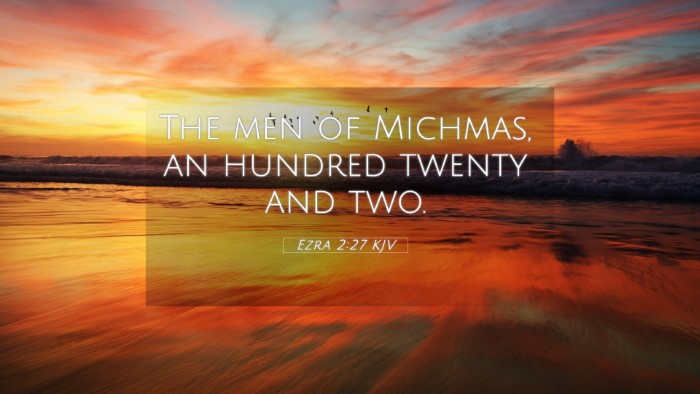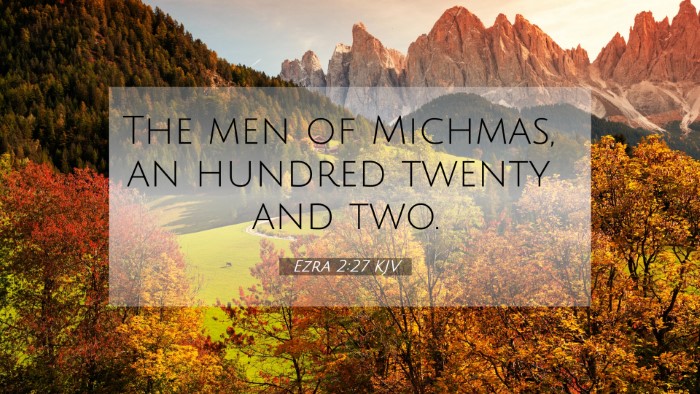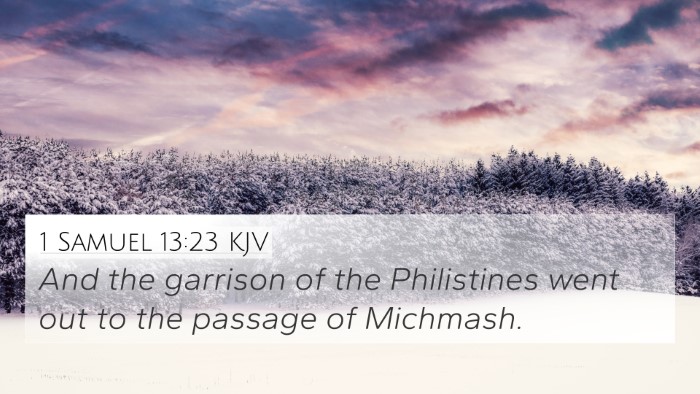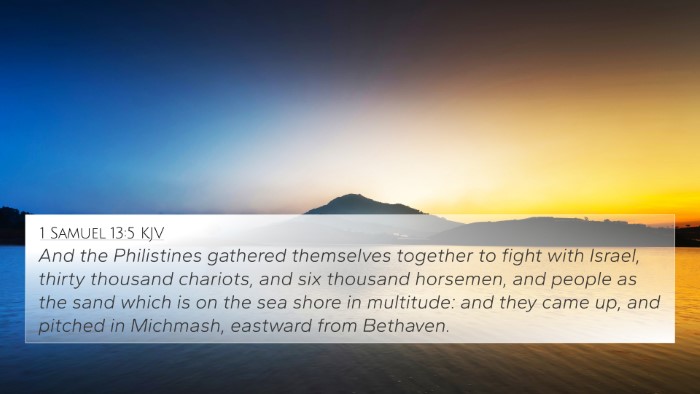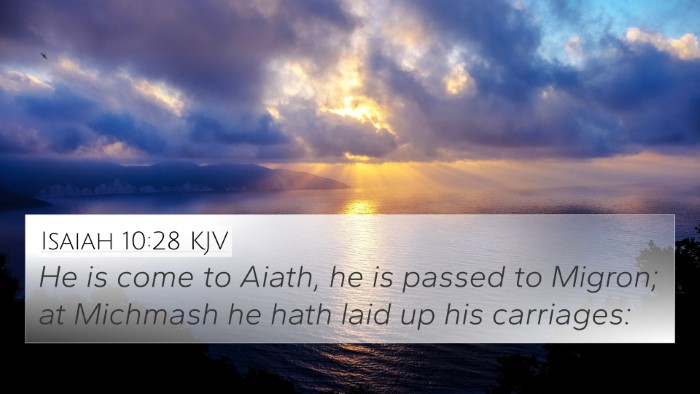Understanding Ezra 2:27
Ezra 2:27 states, "The children of Azmaveth, forty and two." This verse is concise yet rich in historical and spiritual significance. It lists the descendants of Azmaveth among those returning from Babylonian captivity, reflecting the community that was rebuilding Jerusalem. The number signifies the importance of exact records in the Jewish tradition and the emphasis on heritage and family lineage.
Commentaries provide insights into this verse's implications:
- Matthew Henry: He emphasizes the continuity of the Jewish people despite their captivity, highlighting that the return is not just a physical journey, but a restoration of their identity. The listing of families underscores God's faithfulness to His covenant and the importance of each family unit in His divine plan.
- Albert Barnes: Barnes points out that records of families serve to affirm the legitimacy of those returning. It signifies the remnant that God preserves, as well as the collective effort of the community in re-establishing their worship and society.
- Adam Clarke: Clarke provides practical implications of these genealogies for the Jewish exiles. He suggests that such lists serve both as a reminder of their past and a charge for the future, calling them to rebuild not only their physical homes but also their spiritual lives centered on the worship of God.
Key Themes and Connections
The verse, albeit short, captures several significant themes within biblical literature:
- Restoration: The return of the exiles is a central theme in the history of God's people, showing His grace in restoring them from the ashes of their disobedience.
- Identity: The detailed records highlight the importance of identity and belonging amongst God's people, each family contributing to the larger community narrative.
- God's Faithfulness: The genealogical records remind us of God's faithful covenant with Israel, reaffirmed through the returns mentioned throughout biblical history.
Bible Verse Cross-References
Ezra 2:27 connects with several key passages in the Bible:
- Nehemiah 7:22: Shares a similar list of families returning from the Exile.
- Jeremiah 30:3: Prophecy of restoration for Israel, emphasizing their return and rebuilding.
- Isaiah 43:5-6: God promises to gather His people from the ends of the earth.
- Ezekiel 36:24: God’s promise to bring them back to their own land.
- 1 Chronicles 9:1: Highlights the importance of genealogical records.
- Matthew 1:12: The genealogies of Jesus Christ establish His line through the Jewish heritage.
- Romans 9:3-4: Paul speaks of the Israelites and their significance in terms of God's promises.
Tools for Bible Cross-Referencing
To further study verses like Ezra 2:27 and understand their connections, consider using:
- Bible concordance to find related verses.
- Bible cross-reference guides that map connections between Old and New Testaments.
- Cross-reference Bible study methods for thematic analysis.
Conclusion
Ezra 2:27 serves as a powerful reminder of the restoration of God's people and their identity. Through careful analysis and cross-referencing, we can uncover the rich tapestry of scripture that speaks to God's ongoing faithfulness through generations. Each list, such as that of Azmaveth's descendants, is part of a greater narrative that connects our spiritual heritage to God's promises throughout the Bible.
Exploring the connections between Bible verses enhances our understanding of God's work through history and His continued presence in the lives of believers today. By engaging with biblical genealogy, we not only discover the nuances of the text but also deepen our relationship with the God who orchestrates our stories.

